CHAPTER 2: THE COLONIAL PERIOD
Map depicting the English colonies and western territories, 1763-1775.
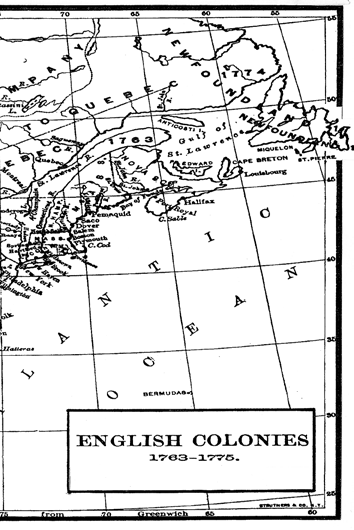
OUTLINE OF U.S. HISTORY
37
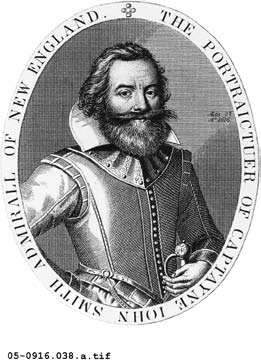
John Smith,
the stalwart
English explorer
and settler whose
leadership helped
save Jamestown from
collapse during its critical
early years.
B E C O M I N G A
NAA PIT
C T U R E IO
P R O F I L E N
The United States of America was transformed in the two centuries
from the first English settlement at Jamestown in 1607 to the
beginning of the 19th century. From a series of isolated colonial
settlements hugging the Atlantic Coast, the United States evolved
into a new nation, born in revolution, and guided by a Constitution
embodying the principles of democratic self-government.
38
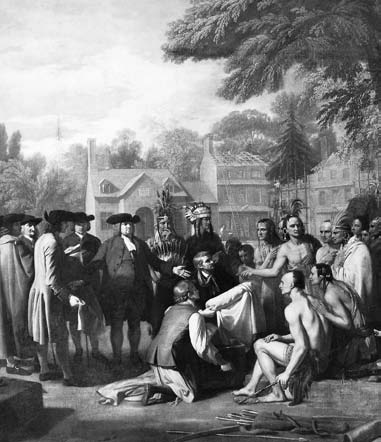
Detail from a painting by American artist Benjamin West
(1738-1820), which depicts William Penn’s treaty with the
Native Americans living where he founded the colony of
Pennsylvania as a haven for Quakers and others seeking
religious freedom. Penn’s fair treatment of the Delaware
Indians led to long-term, friendly relations, unlike the conflicts
between European settlers and Indian tribes in other colonies.
39
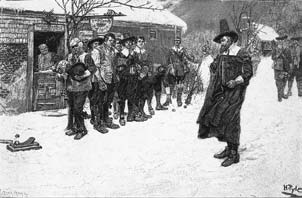
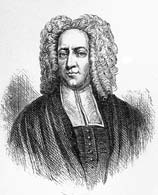
A devout Puritan elder (right) confronts patrons drinking ale outside a
tavern. Tensions between the strictly religious Puritans, who first settled
the region, and the more secular population were characteristic of the
colonial era in New England.
Cotton Mather was one of
the leading Puritan figures
of the late 17th and early
18th centuries. His massive
Ecclesiastical History of
New England (1702) is an
exhaustive chronicle of the
settlement of New England
and the Puritan effort to
establish a kingdom of God
in the wilderness of the
New World.
40

Statue of Roger Williams, early champion of religious freedom
and the separation of church and state. Williams founded the colony of
Rhode Island after leaving Massachusetts because of his disapproval
of its religious ties to the Church of England.
41
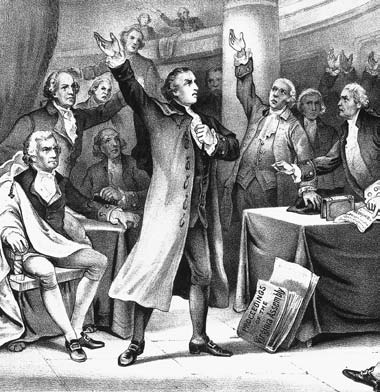
Drawing of revolutionary firebrand Patrick Henry (standing
to the left) uttering perhaps the most famous words of the
American Revolution — “Give me liberty or give me death!”
— in a debate before the Virginia Assembly in 1775.
42
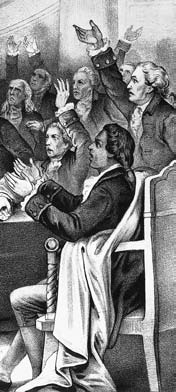

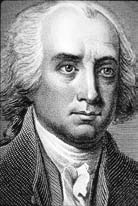
Benjamin Franklin: scientist, inventor, writer,
newspaper publisher, city father of Philadelphia,
diplomat, and signer of both the Declaration of
Independence and the Constitution. Franklin
embodied the virtues of shrewd practicality and
the optimistic belief in self-improvement often
associated with America itself.
James Madison, fourth president of
the United States, is often regarded
as the “Father of the Constitution.”
His essays in the debate over
ratification of the Constitution were
collected with those of Alexander
Hamilton and John Jay as The
Federalist Papers. Today, they are
regarded as a classic defense of
republican government, in which the
executive, legislative, and judicial
branches check and balance each
other to protect the rights and
freedoms of the people.
43
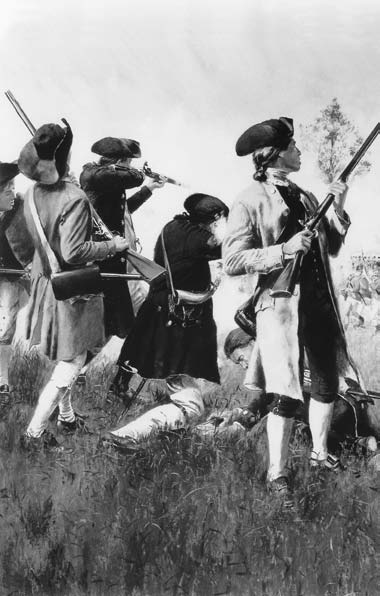
Artist’s depiction of the first shots of the American
Revolution, fired at Lexington, Massachusetts,
on April 19, 1775. Local militia confronted British
troops marching to seize colonial armaments
in the nearby town of Concord.
44
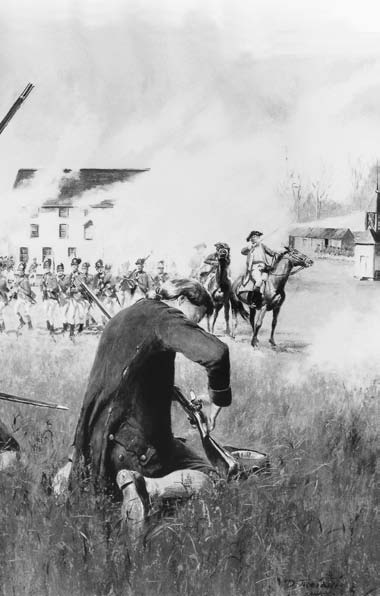
45
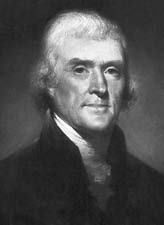

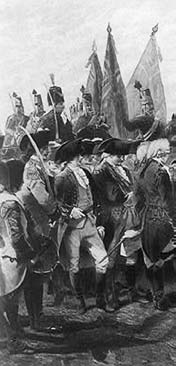
Thomas Jefferson, author of the Declaration
of Independence and third president of
the United States. Jefferson also founded
the University of Virginia and built one
of America’s most celebrated houses,
Monticello, in Charlottesville, Virginia.
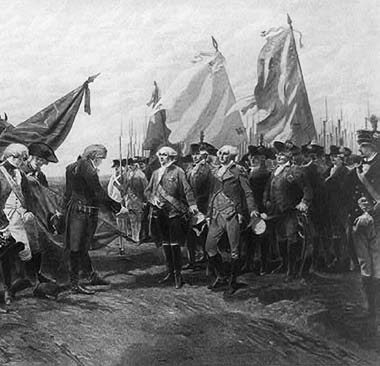
Above: Surrender of Lord Cornwallis and the British army to American
and French forces commanded by George Washington at Yorktown,
Virginia, on October 19, 1781. The battle of Yorktown led to the end of the
war and American independence, secured in the 1783 Treaty of Paris.
Left: U.S. postage stamp commemorating the bicentennial of the Lewis
and Clark expedition, one of Thomas Jefferson’s visionary projects.
Meriwether Lewis, Jefferson’s secretary, and his friend, William Clark,
accompanied by a party of more than 30 persons, set out on a journey into
the uncharted West that lasted four years. They traveled thousands of
miles, from Camp Wood, Illinois, to Oregon, through lands that eventually
became 11 American states.
47
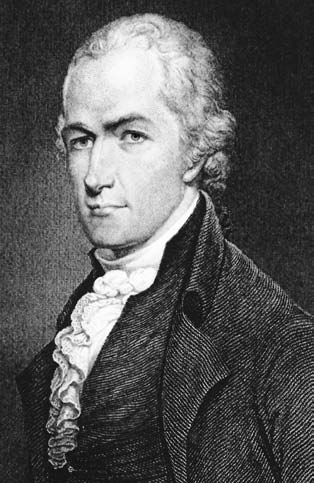
Alexander Hamilton, secretary of the treasury in the administration of
President George Washington. Hamilton advocated a strong federal government
and the encouragement of industry. He was opposed by Thomas Jefferson,
a believer in decentralized government, states’ rights, and the virtues of
the independent farmers and land owners.
48
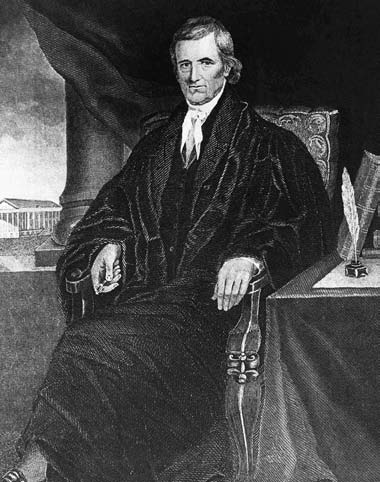
John Marshall, chief justice of the U.S. Supreme Court from 1801 to 1835, in a portrait by Alonzo Chappel. In a series of landmark cases, Marshall established the principle of judicial review — the right of the courts to determine if any act of Congress or the executive branch is constitutional, and therefore valid and legal.
49
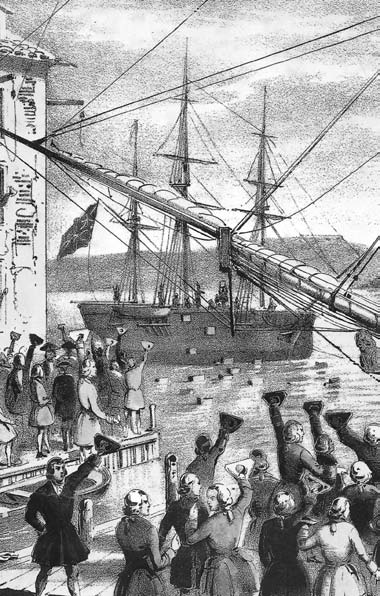
50
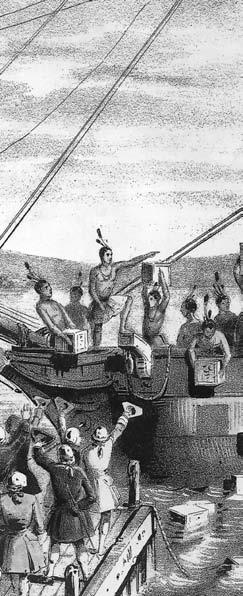
C H A P T E R
3
THE ROAD
TO
INDEPENDENCE
The protest against British
taxes known as the “Boston
Tea Party,” 1773.























